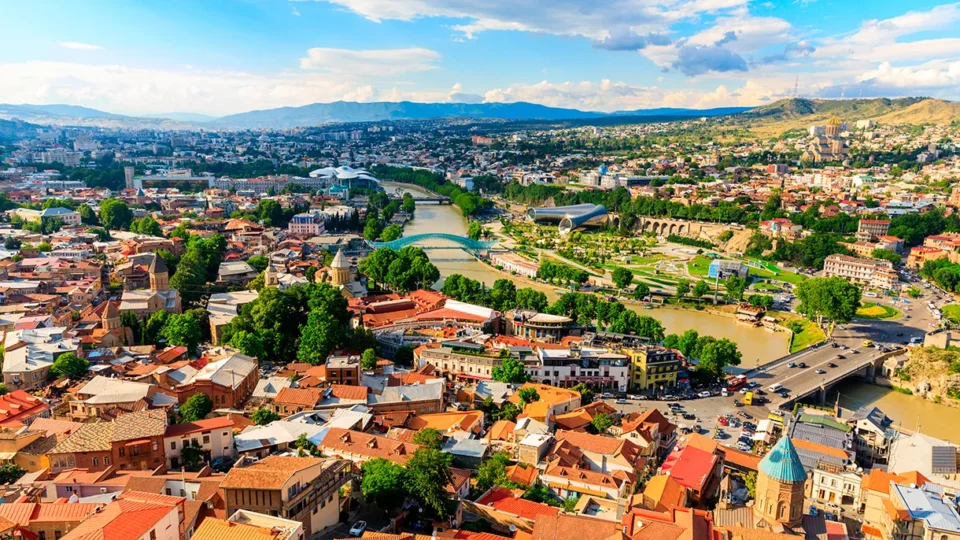The capital of Georgia continues to be a popular destination. Visitors from around the world come here at any time of the year. Some stay for an extended period to spend their entire vacation here, while others find themselves in this ancient city for a short time. Naturally, they want to experience as much as possible and not miss the most important sights. What can you see in Tbilisi in 2 days on your own?
Of course, it depends on your preferences. However, it’s advisable to plan your route so that it interests all tourists, both adults and children. Whether you are traveling as a family, with friends, or alone, it’s best to allocate your time to alternate between visiting ancient temples and monasteries and exploring museums. Take time to sit in a café, ride the cable car, and enjoy some entertainment. So, what could the program look like?
First Day
This will be the most vibrant day because you will be seeing this amazing city, a cultural center, for the first time, which is both ancient and modern. Whether it’s summer or winter, ensure you wear sturdy, comfortable shoes, take a camera with you, and let’s go.
Freedom Square
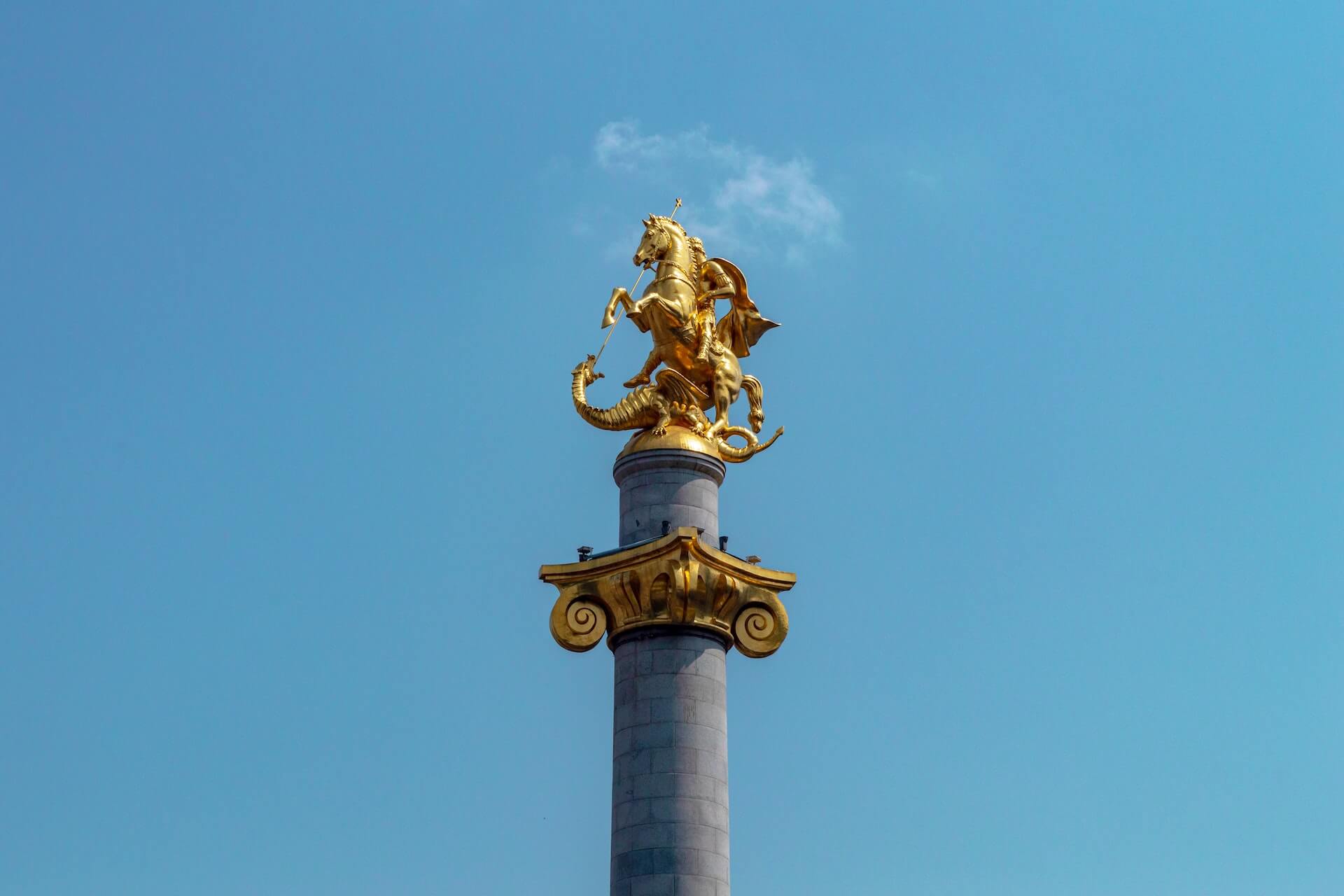
This square has seen a lot and has changed its name several times. At the end of the 18th century, there was an empty lot here. Nearby were fortress gates. On the free territory stood caravanserais, which were hotels for merchants; trade took place here, and equestrian competitions were held. Moreover, there was a rather deep ravine through this land.
Later, the fortress wall was dismantled. Georgia was annexed to the Russian Empire. A new part of the city began to be built according to the developed plan, and now the square served as a link between the old and new districts.
Here were buildings that played a significant role in the life of the country. For example, the headquarters of the Caucasian army, the police (later the city council met here). Several hotels on the square have also been preserved. When the Russian army took Yerevan (Erivan), the square was renamed – first in honor of the commander Paskevich-Erivansky, and then simply called Erivan Square.
In the mid-19th century, a theater and a caravanserai were built according to the project of a famous architect. Few know that soon after, the theater was visited by Alexandre Dumas, who was traveling in the Caucasus at that time, and he was delighted with this cultural center. The writer was impressed by both the theater’s decoration and the charming spectators who came to see the performance.
At the end of the 19th century, the ravine was filled in, and the square was paved with cobblestones. In 1874, the theater building burned down and was never restored. As for the caravanserai, it was demolished under Soviet rule, and stands for honored guests were erected in its place.
For a while, the square was named after Beria and then dedicated to Lenin. The monument to the leader of the Soviet proletariat stood here for a long time. In 2006, the Monument of Freedom appeared on the square. The majestic monument was created by Zurab Tsereteli. Saint George, deeply revered by Georgians, is depicted on a horse, the great warrior slaying the dragon symbolizing evil.
Anchiskhati Basilica
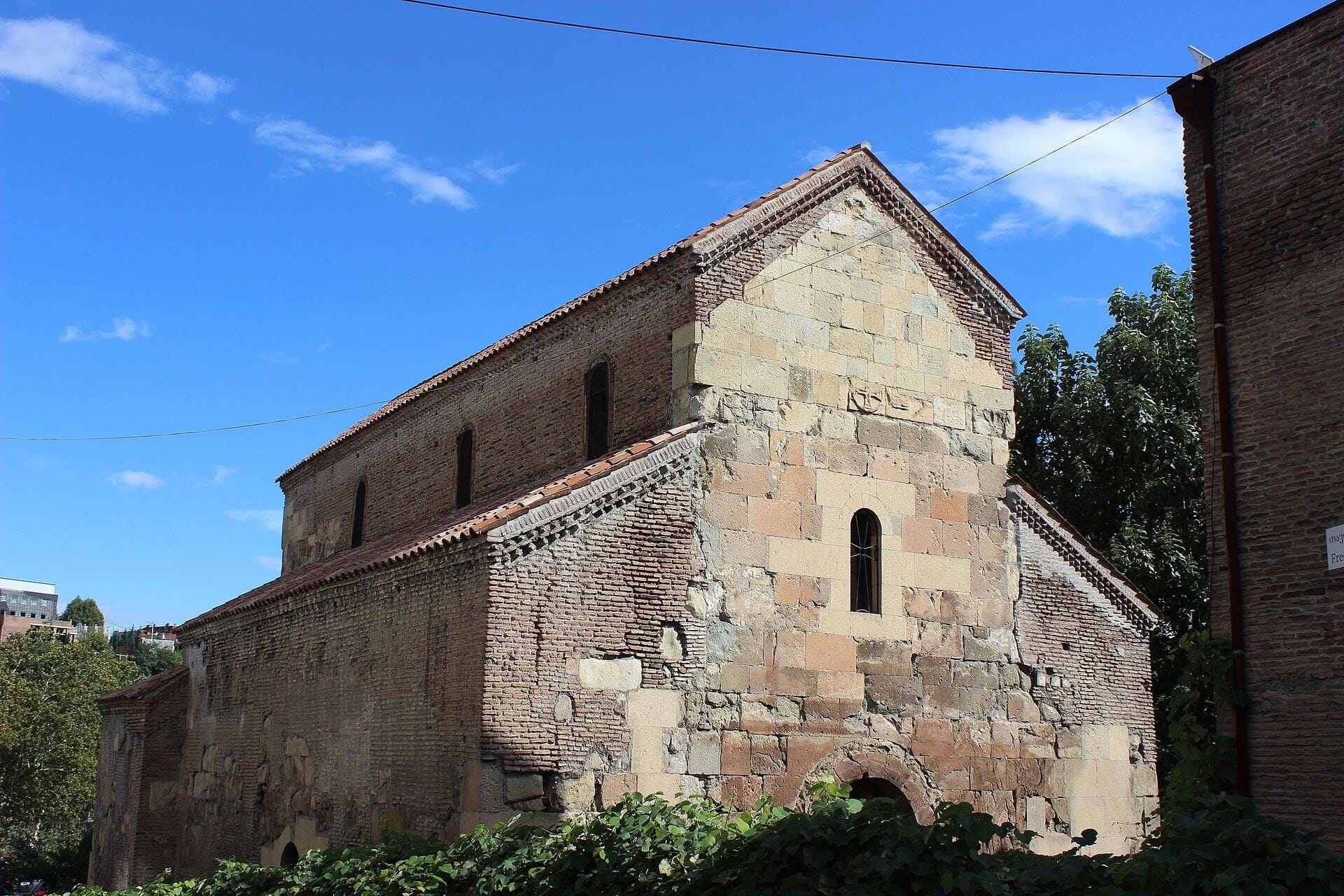
A monument of early Christianity with a very interesting history. The proper name of the basilica is the Church of the Nativity of the Virgin Mary. The church was built in the 6th century. Initially, it adhered to the traditions of ancient Palestinian architecture. The temple is rectangular and has three exits, but now only one is operational. On the doors, you can see a “special” Georgian cross, based on a grapevine.
The oldest part of the temple is the western section, while the other parts, particularly the upper section, have been reconstructed several times. It is assumed that the church was started by the order of the ruler of the Iberian kingdom, Dachi Ujarmeli. The temple got its name from an ancient image of Christ the Savior.
When King Abgar of Edessa (Syria) fell ill, he believed that only Jesus could cure him. He wrote a letter and sent it with an artist. In Jerusalem, the artist saw Christ among people and tried to sketch His face from afar, but he failed. Then the Savior approached the artist, wrote a reply to the king’s letter, washed his face, and wiped it with a cloth, which bore His image.
By touching the holy icon, Abgar was healed. Since then, it was kept in a niche above the main gate leading to the city, and people worshipped it. Afterward, during the Arab conquests, the icon was taken to Byzantium and later to Georgia. Eventually, it ended up in the Church of the Virgin Mary. Hence, Anchiskhati (where “khati” means icon). Today, the icon is kept in the national museum of the country.
The temple itself was repeatedly rebuilt. During the Soviet years, it served as a workshop and later as an art studio. Church services resumed in the 1980s. Today, you can listen to beautiful Georgian church hymns and see ancient icons.
Sioni Cathedral
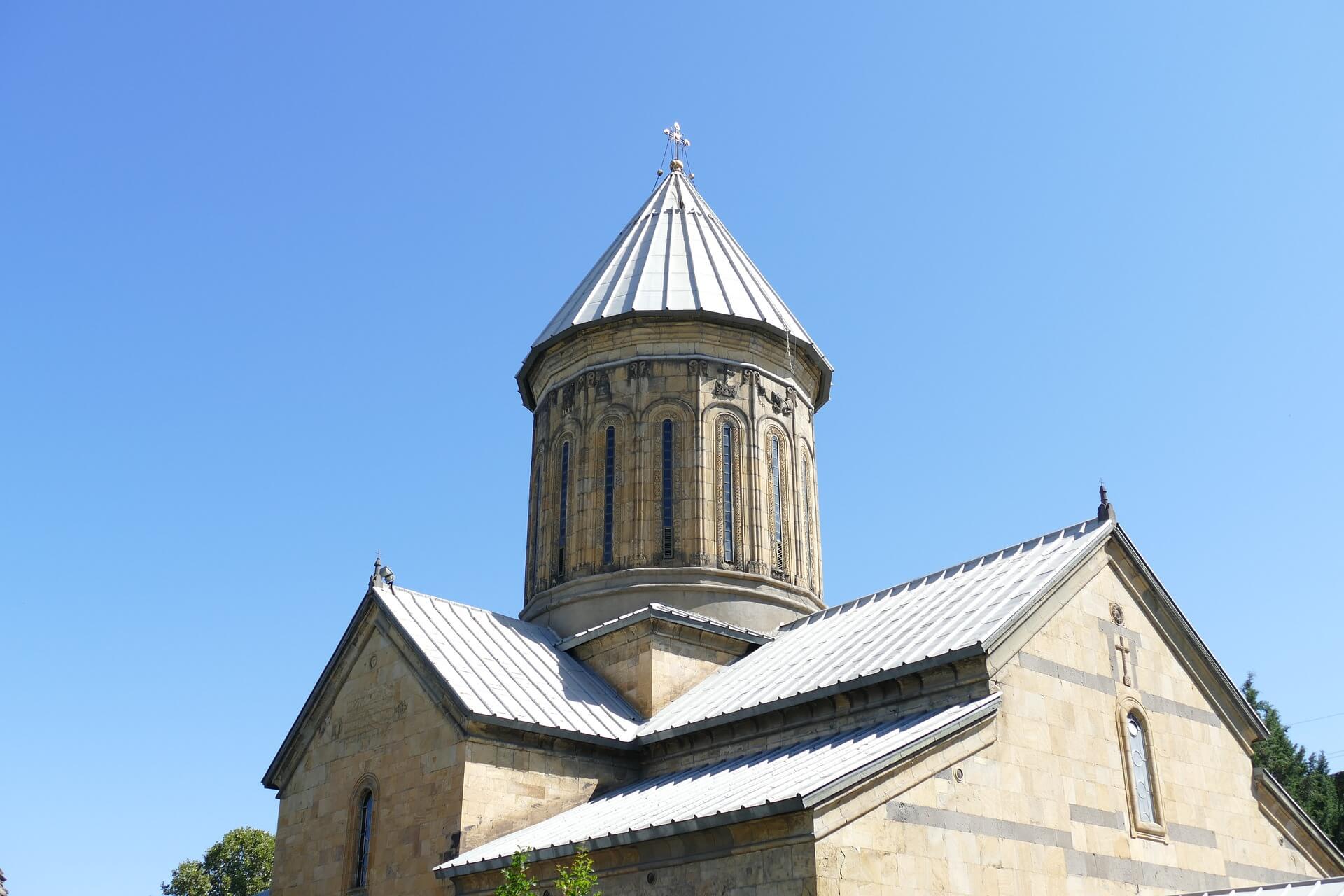
Another ancient church with an interesting history. The name might raise questions. It is dedicated to the Assumption of the Virgin Mary, and “Sioni” is a tribute to the ancient tradition of naming churches in Georgia after holy places in Jerusalem. Thus, Mount Zion gave its name to the cathedral.
The first church on this site was built in the 4th century, according to various versions, either by the order of King Vakhtang I of Iberia or a Byzantine nobleman named Guaram. Nothing remains of the ancient structure – it was destroyed by the Arabs. When David IV liberated the lands in the 12th century, a new church was erected here.
It was also repeatedly destroyed but then rebuilt. In the 17th century, it suffered from an earthquake. At the end of the 18th century, the troops of Agha Mohammad Khan destroyed the icons and frescoes.
The cathedral regained its original appearance in the 1980s. Tourists are attracted here by the romantic moment – Alexander Griboedov and Nino Chavchavadze were married here. Their beautiful and tragic love story has long become a legend.
Besides, here you can see frescoes by the artist Gagarin and admire the ancient bell tower from the 15th century. The main relic of the cathedral is the cross of Saint Nino, believed to have been given to her by the Virgin Mary. With this cross, Nino preached Christianity.
Rezo Gabriadze Marionette Theater
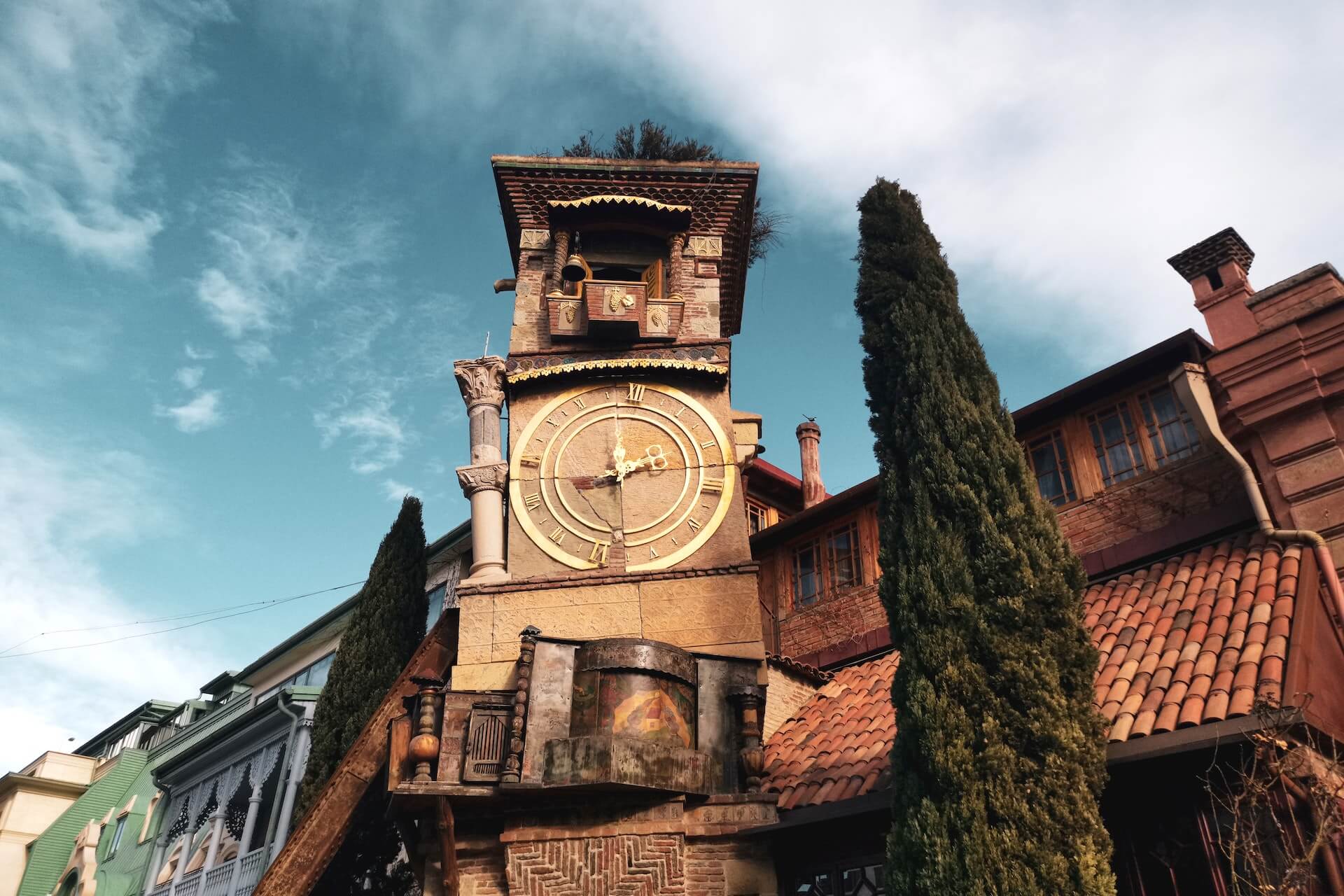
Nearby, in the old part of the city, is an amazing puppet museum. Undoubtedly, the clock tower attracts attention. The exact address is Shavteli Street 13, but theater enthusiasts prefer to avoid the unlucky number, calling it 12+1. Everyone photographs the crooked tower with the clock. It seems ancient, although it was artificially aged to fit the overall color of the old streets.
The creator of the theater is Rezo Gabriadze, a well-known Georgian artist and playwright. He made the tiles that adorn the tower himself. Every hour, an angel strikes the bell, and twice a day, at 12 and 19 o’clock, the puppets perform a whole show lasting 15 minutes. You can watch the “mini-performance” for free. It is dedicated to the cycle of life.
There are also the smallest tower clocks nearby, smaller than an adult’s fingernail. There is also a drinking fountain richly decorated with tiles. Rezo wrote plays and made puppets himself.
Initially, the theater was tiny, but the productions made a real splash, so in the 1980s, the construction of the building you can visit today began. The performances are very unusual – there are four of them. One is dedicated to the love story of locomotives, another to the Battle of Stalingrad, a third to the adventures of a Georgian marshal in Paris, and the fourth to post-war Kutaisi.
It is also worth visiting the café “Don’t Worry,” located next to the theater. They serve incredibly delicious Georgian dishes and local wines.
Bridge of Peace
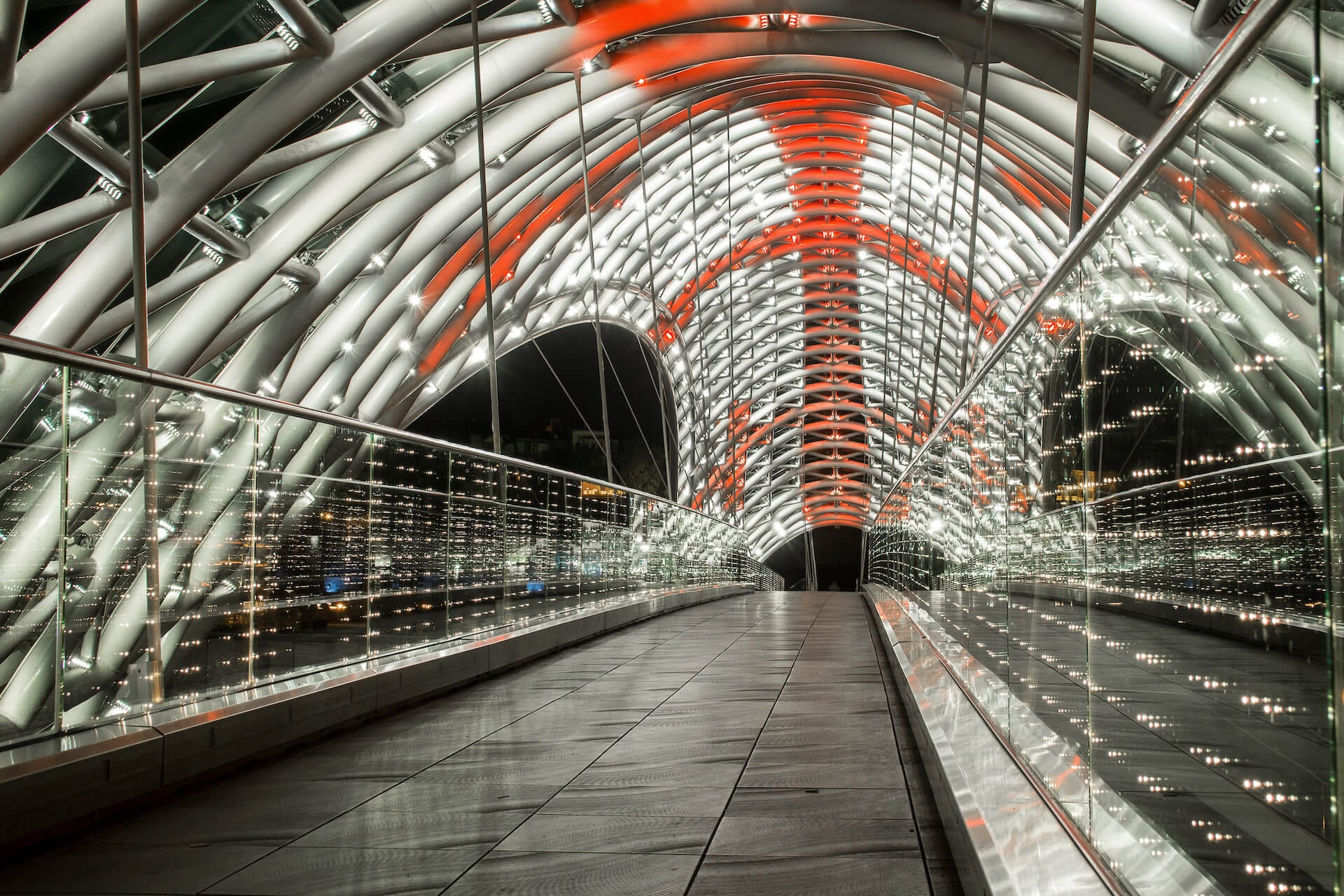
The bridge crosses the Kura River. It connects the Old Town with the well-known Rike Park. The idea of building such a structure arose after the Georgian-Ossetian war of 2008. The initiative was taken by Mikheil Saakashvili, supported by the city hall. The bridge was opened in May 2010. It is the newest in Georgia. Architect Michele De Lucchi designed it, symbolizing the transition from the past to the future.
Today, the bridge is a true hallmark of the city. It is supported by steel pillars, with a glass roof above. Its length is over 150 meters. To prevent crowding on the Bridge of Peace, additional descents are provided. However, the main highlight is the lighting.
50,000 light bulbs not only illuminate the bridge; in the evening and at night, they flash, transmitting messages that can be read by someone familiar with Morse code. These are the names of the chemical elements that make up the human body. No matter what race or nationality a person belongs to, they consist of these elements.
People usually come to the Bridge of Peace to visit Rike Park and to stroll through the Old Town, where many attractions are concentrated.
Rike Park
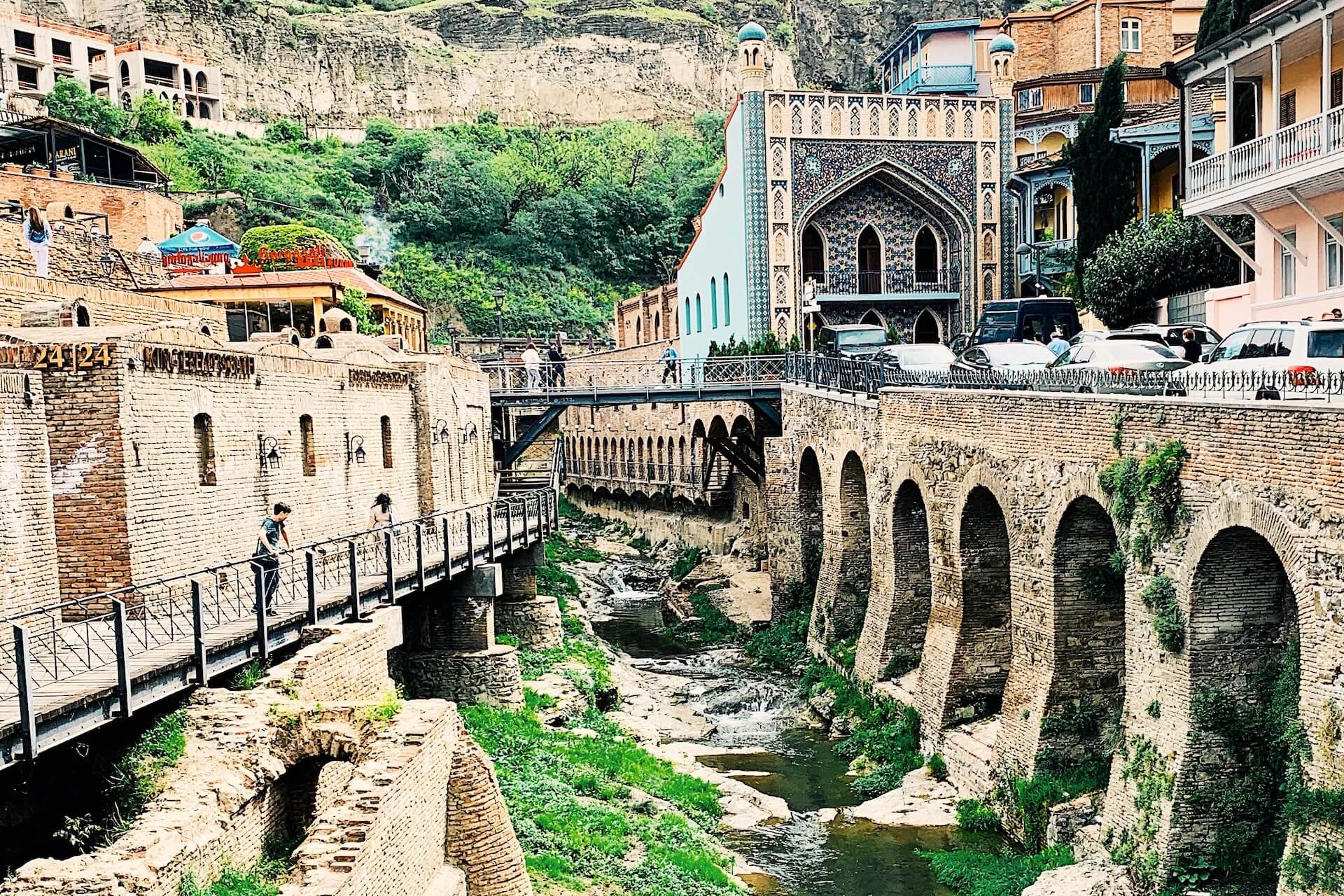
A modern park that recently appeared in Tbilisi. Its shape resembles the outline of Georgia on the map. The park is well-maintained, clean, with many benches, drinking fountains, and numerous alleys. In the future, the park will be shady and green, but for now, the vegetation hasn’t grown much, so in hot weather, you will have to find a spot to hide from the scorching southern sun.
It is worth coming here in the morning or evening to admire the beautiful sculptures, dream about the future near the Wishing Tree, which is 9 meters tall, and play chess with giant chess pieces right under the open sky.
The complex, called “two pipes” by the locals, also attracts attention. The buildings, especially from a distance, resemble periscopes. There will be an exhibition hall and a theater. The cable car station, popular with city guests, is also located here.
Cable Car
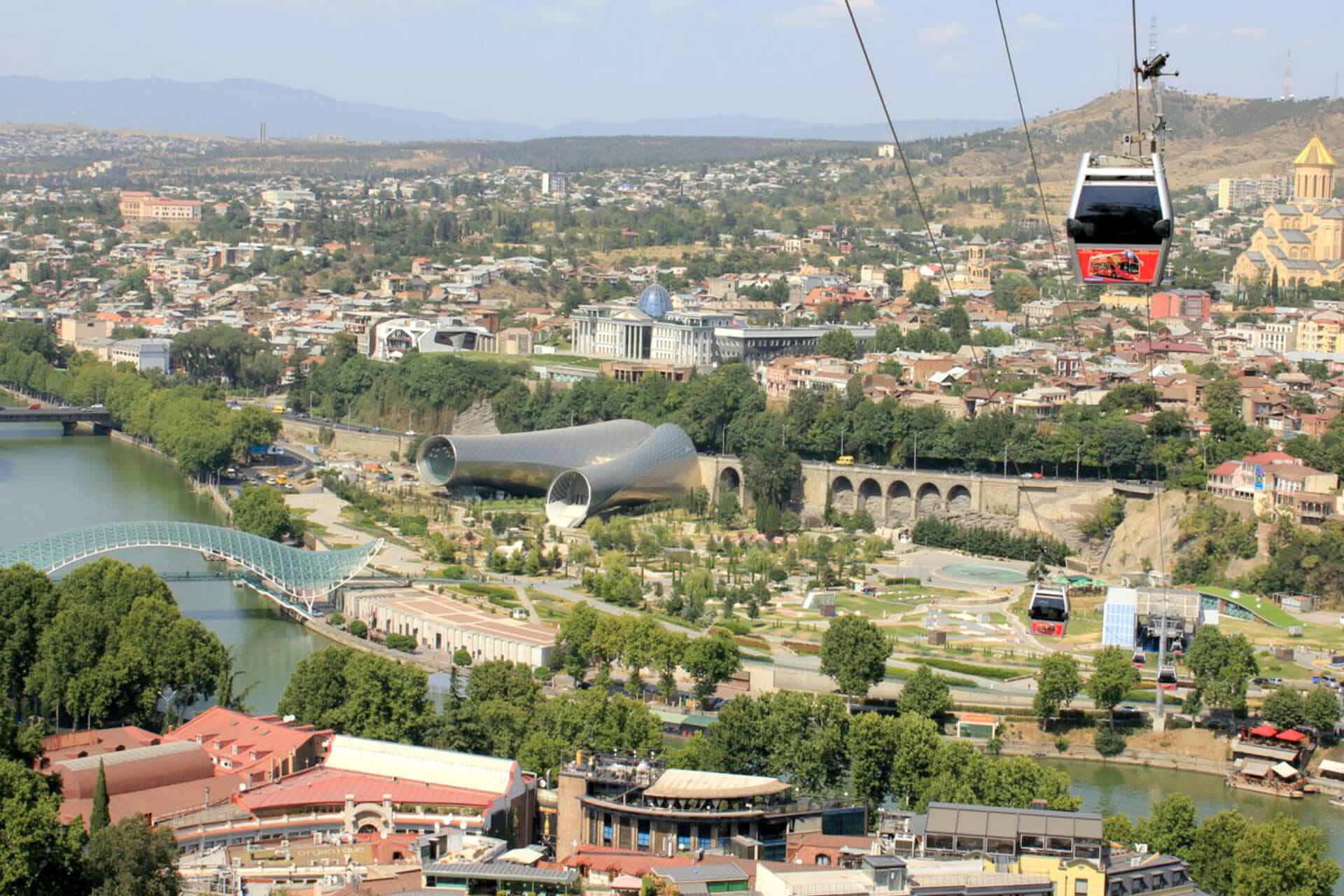
The city has several cable cars, but tourists should first take the one that leads from Rike Park to the fortress ruins.
The modern cable car, opened in 2012, stretches for about half a kilometer, with a height difference of nearly 100 meters. You won’t have time to get bored during the ascent, as you will reach the top platform in less than two minutes.
Each cabin can accommodate up to eight people, enough even for a large family. Note that bicycles are not allowed. As you ascend, you can gaze at the entire Old Tbilisi and admire it from the height where birds fly.
You will also realize that all the attractions of the Georgian capital are compactly located. Of course, you can climb to the fortress on foot – there is a special route. However, such a journey will be very tiring, especially in summer when the heat is relentless.
The cabins glide up smoothly and slowly. You can admire the picturesque roofs of the city, the river, and the temples. But it is especially spectacular at night when the unique Bridge of Peace is illuminated. You can take wonderful photos.
Narikala Fortress
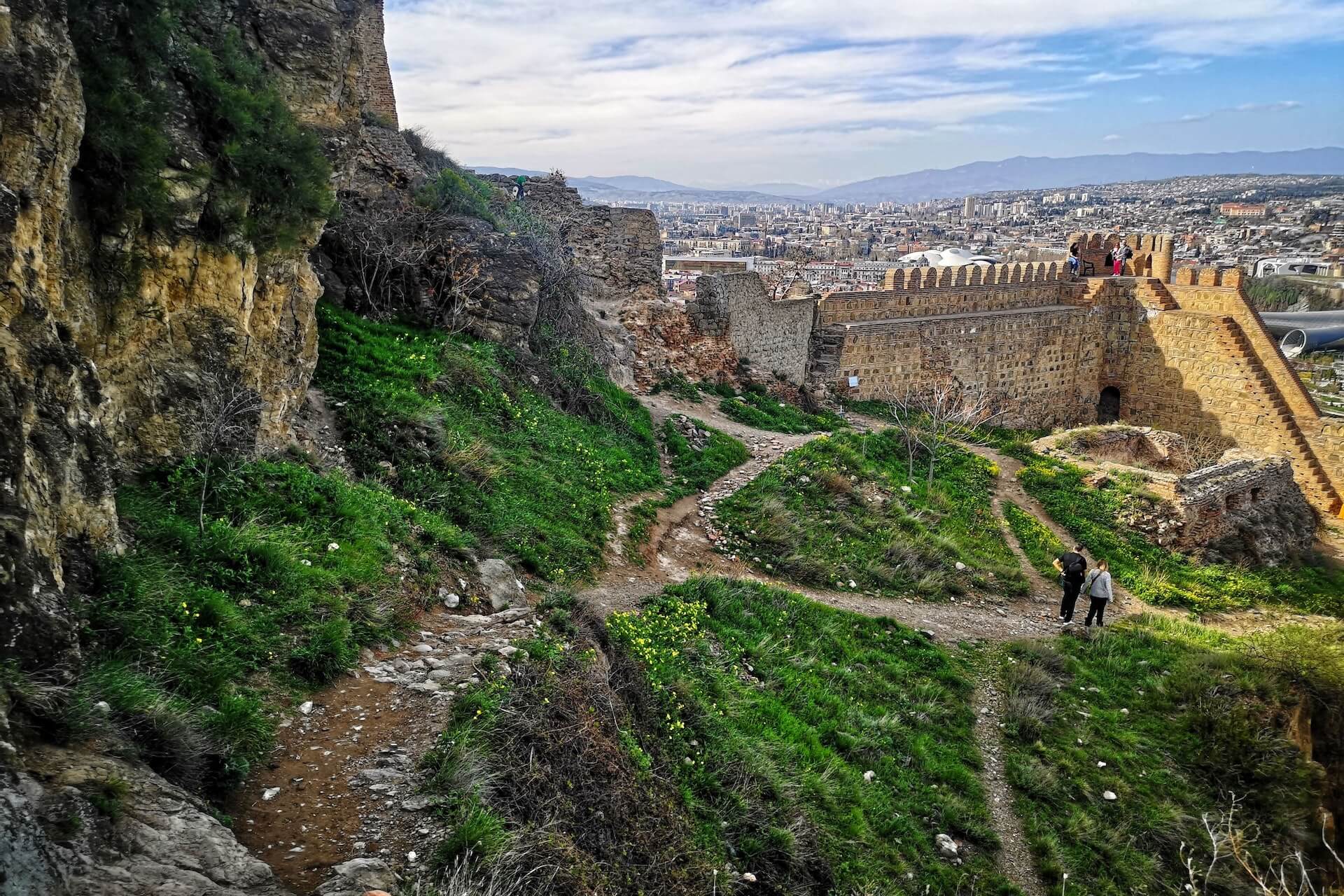
Tbilisi cannot be imagined without this fortress. It is located in the historical part of the metropolis, and even archaeologists cannot say exactly when it was built. It is known that in the 4th century, when there was no city here, the stone fort already existed. The current name was given by the Mongols much later. It translates to “small fortress.”
Excavations began in the 1960s. In 1996, the church of Saint Nicholas was restored. The observation deck also attracts tourists. But in summer, to enjoy the scenery, a hat is essential as there is no shade here, and there is nowhere to hide from the scorching sun.
Historically, the fortress was expanded in the 8th century. In the 12th century, it was additionally fortified and became even larger. The fortress was finally completed in the 17th-18th centuries. Military garrisons were stationed here, and during military actions, the fortress became truly impregnable. Its fighters not only defended the city but also ensured that merchants could travel safely on nearby roads.
Some bastions were demolished in the 19th century when they were no longer needed. The 1827 earthquake severely damaged the entire Narikala. Partial restoration was carried out in the 1990s, and later the cable car appeared, so now Narikala is visited by a large number of tourists every year.
The citadel walls have been preserved in fragments, and a cross stands at the top of the fortress. This is the highest point in the old part of the city. Visitors can also enter the church of Saint Nicholas, built in the 12th century and once used as a powder magazine. During restoration, the church was practically rebuilt. Services are held here today.
Botanical Garden
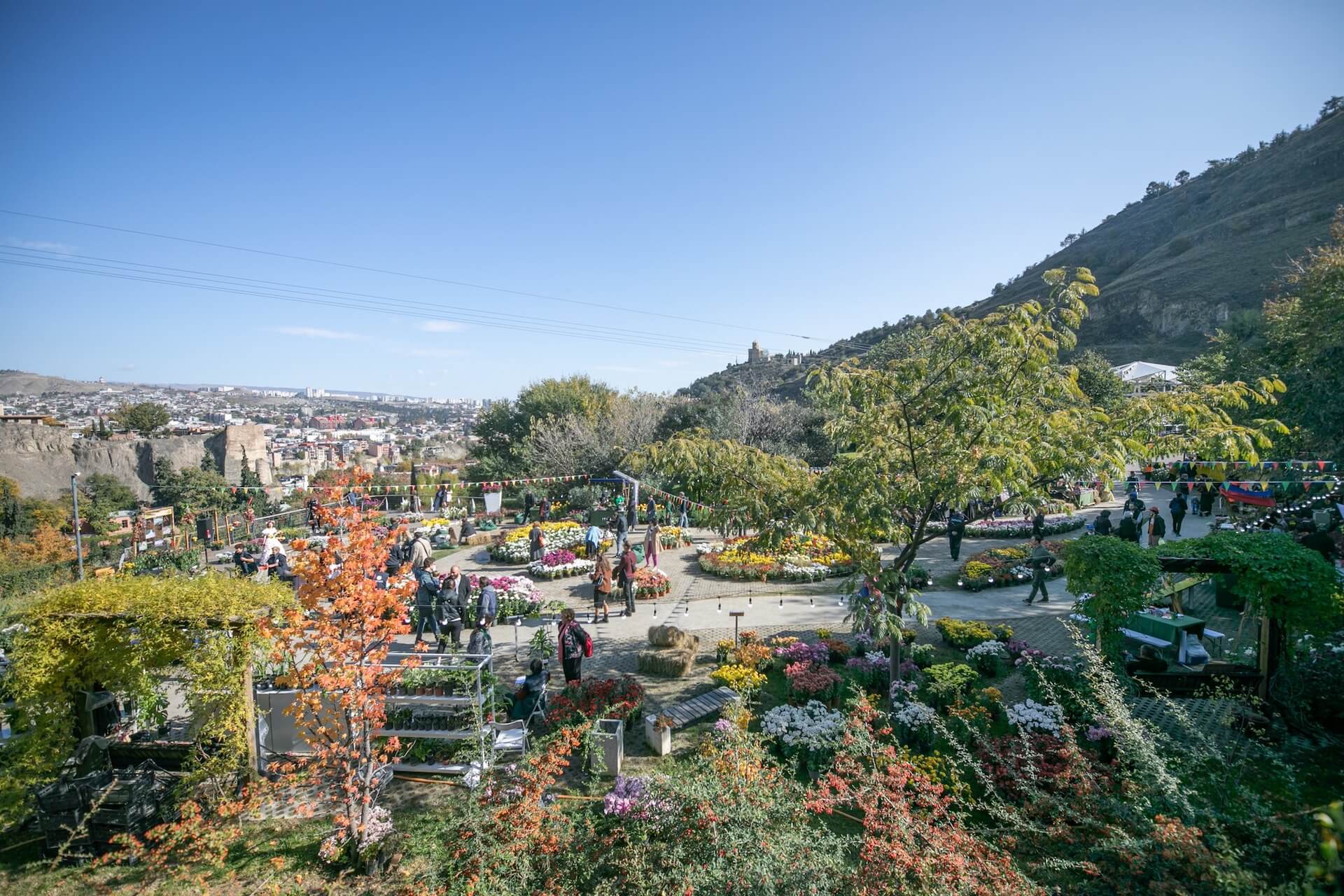
A very pleasant place to rest and enjoy the coolness. The garden resembles a real jungle. Previously called the Royal Garden, it later became the Tiflis experimental station.
Today, you can see a waterfall and picturesque bridges over the river, one of which was built during Queen Tamar’s reign. It is most beautiful here in spring when everything blooms, including trees. In summer, many events are held here, from open-air lectures to festivals and fairs.
To learn more about local plants, it is best to order a tour – you will be driven around on mini-carts, so the journey will not be tiring. The garden has both local flora and green guests from other countries. There is also an “Apothecary Garden” where you can see medicinal plants.
Pay attention to the “Small Circle” route – it will allow you to see the most interesting parts of the Botanical Garden. Try to allocate at least two hours to explore this green corner.
Sulfur Baths
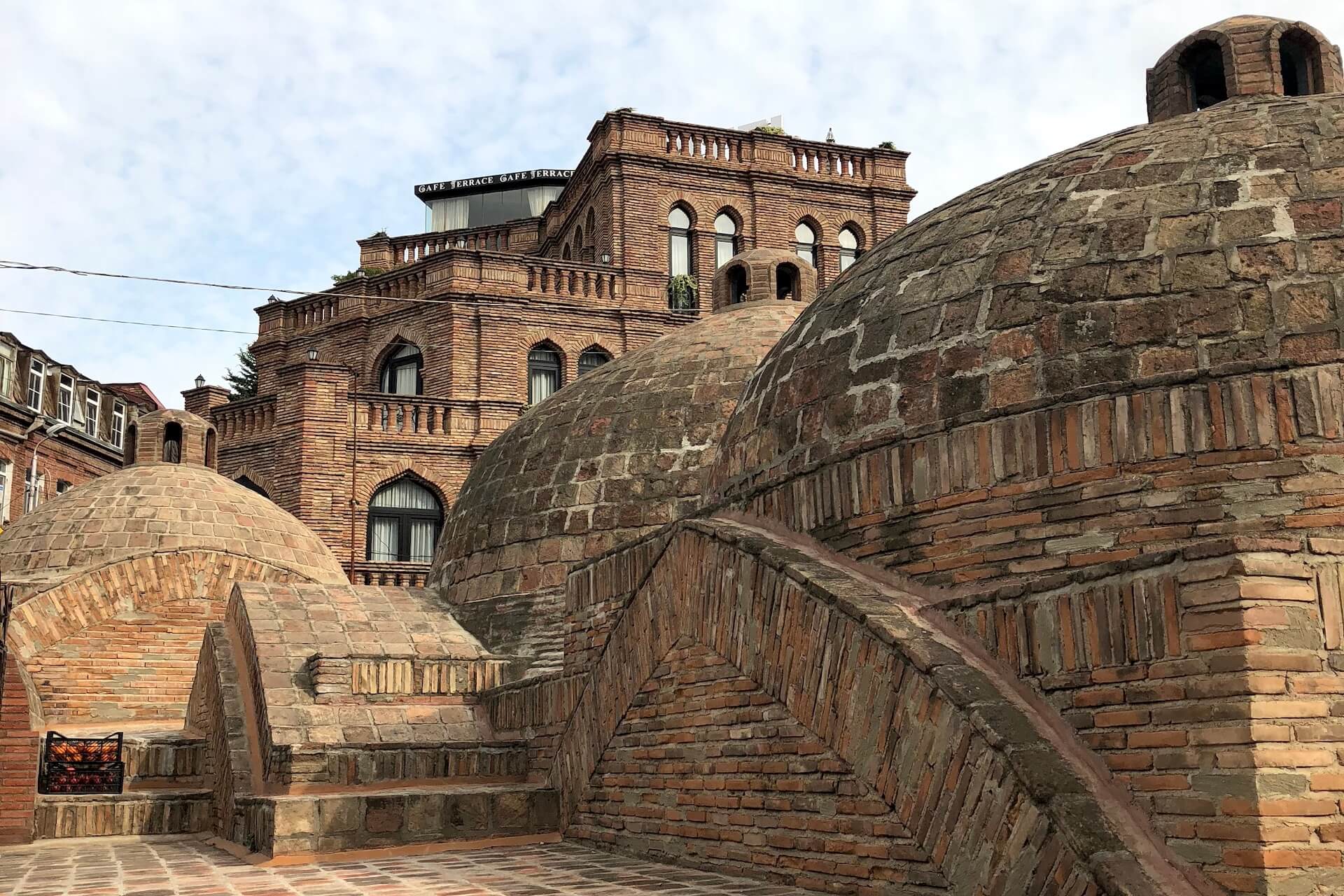
In fact, Tbilisi began with these baths. Long ago, people knew about the healing power of mineral water. Thus, thermal springs with high sulfur content attracted people. Various legends are associated with these waters.
Of course, the baths have not stood for centuries – some were destroyed, and others were built in their place. Today, tourists visiting the Georgian capital also want to benefit from the healing power of these waters. There are so many visitors that it is better to book a steam room in advance. You can do this on the official website.
There are about ten steam rooms in total, with the most popular being the Colorful Bath. You can book a private room or choose a common hall, which is much cheaper. Massage and various spa treatments are also offered.
You can visit the baths just to admire their traditional oriental style decor. Photoshoots, including those of newlyweds, are regularly held here. The buildings are very colorful. Pushkin and Dumas also visited the Colorful Bath, and they liked it very much.
If you plan to steam, you can bring everything you need, such as slippers, a towel, and a washcloth. But if you didn’t bring them, don’t worry; you can buy everything in the nearby kiosks.
Leghvtakhevi Gorge

You can end your first day by visiting Leghvtakhevi Gorge. You don’t need to go far; the Fig Gorge (second name) begins at the end of Abano Street. Tourists walk through it to get to the waterfall, which is practically in the center of a big city, a rare occurrence.
In the 19th century, wealthy citizens’ houses stood on the gorge’s banks, and from the balconies, they could admire the river flowing below. Unfortunately, in the 20th century, sewage was discharged into the river, and later the gorge was completely filled in. It was restored in 2012. Now visitors will see restored houses, beautiful bridges, many benches, and cafes.
Both locals and tourists love to walk here. But the most striking place is the waterfall. In spring, its power increases many times, but it is also beautiful in summer. Around the waterfall are plants that cling to the rock crevices, creating a green wall. It’s worth coming here several times to see the waterfall at different times of the day under various lighting conditions.
Second Day
It will be just as eventful. Visiting ancient landmarks and churches is best combined with relaxing in cafes and parks. You will also see significant monuments and streets of Tbilisi.
Tsminda Sameba
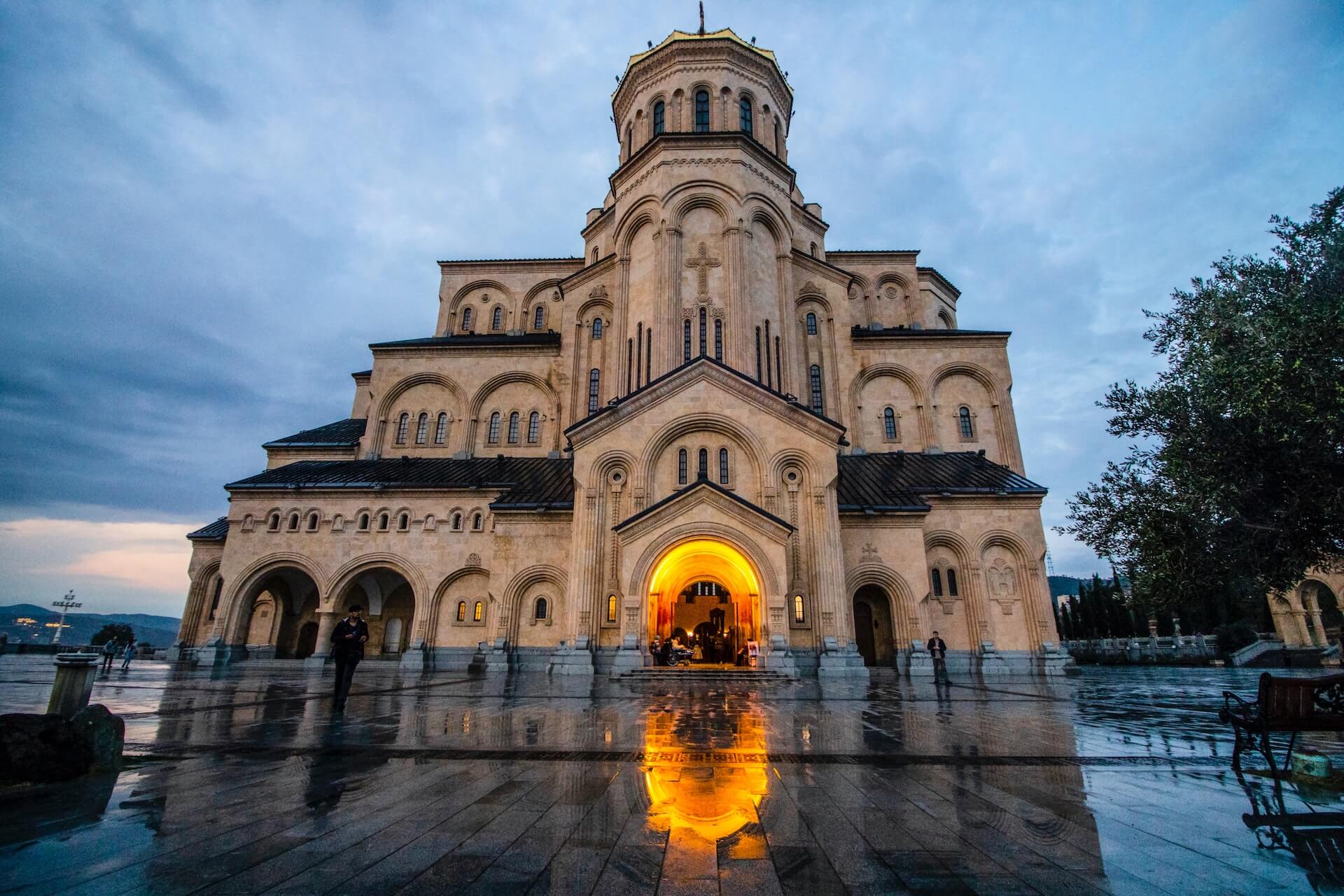
The Holy Trinity Cathedral, or Tsminda Sameba in Georgian, is considered the hallmark of new Georgia. The building is over 100 meters tall and is visible from any point in the city. Thousands of parishioners can gather inside. Late in the evening, spotlights create the illusion of the cathedral glowing, giving it a majestic appearance.
In the early 2000s, the cathedral was consecrated by the head of the Georgian Church, Ilia II. The ceremony was held in a solemn atmosphere with local clergy present. Representatives of the Orthodox Church from many other countries, including Russia, also attended the event.
The building has an unusual architectural design. Its facade seems to be divided into several “tiers.” You will see a vast space with an area of almost 5,000 m². Next to the cathedral, you can see a male monastery and Ilia II’s residence.
Tsminda Sameba includes several chapels, a hotel complex, and spiritual educational institutions. The bells also impress with their grandeur. They were made and cast in Germany. The largest bell weighs 8 tons. A museum and a conference hall operate underground. You can visit the cathedral any day of the week.
Lagidze Waters Café
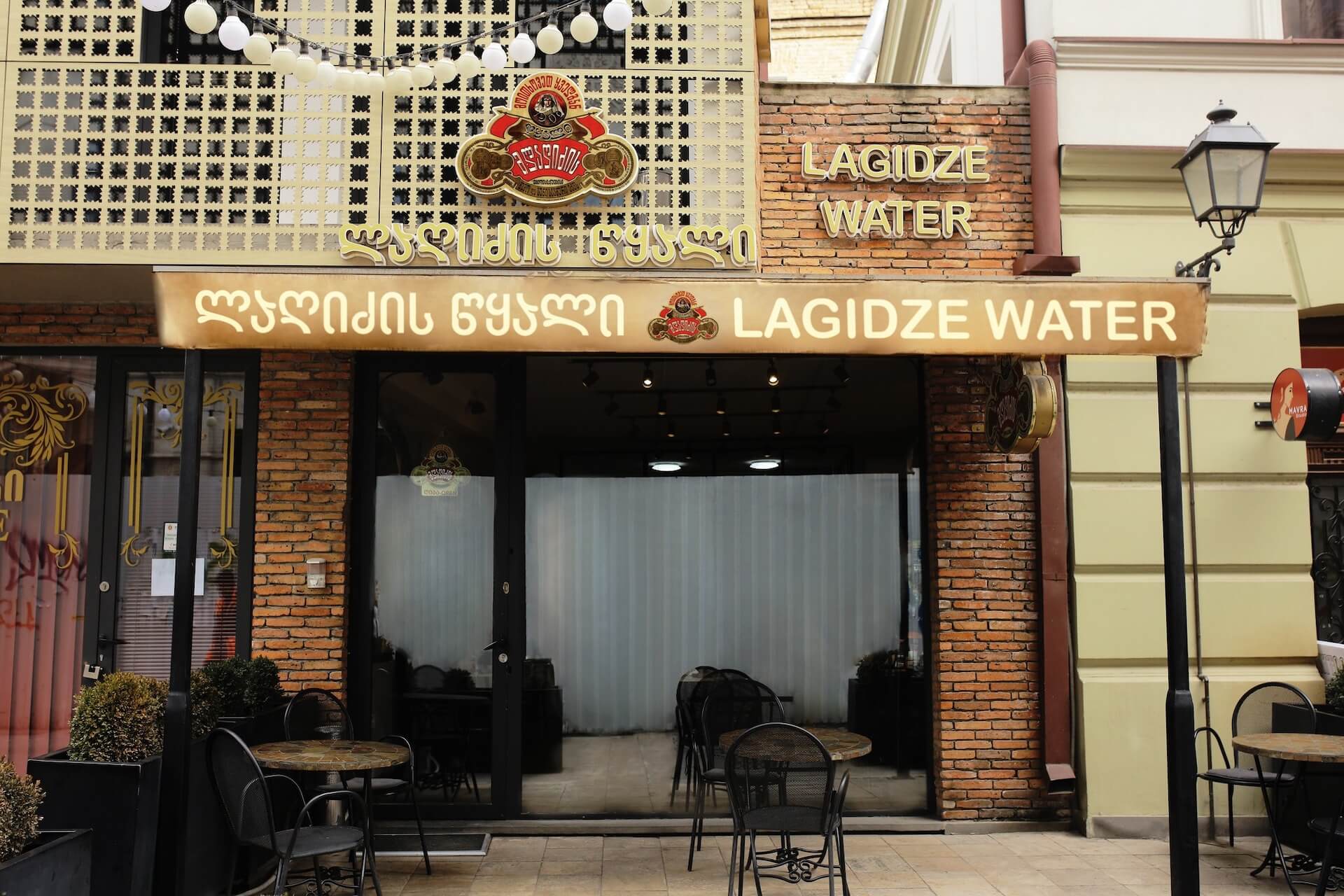
You must visit here, especially since the café is next to the cathedral. In the 19th century, young Mitrophan Lagidze became an assistant to a pharmacist who, besides his main job, made drinks from chemical essences. Mitrophan decided to replace them with syrups made from natural fruits.
In 1887, the enterprise “Mitrophan Lagidze” was registered, and a few years later, a factory producing syrups from local fruits and herbs began operation. Lemonade quickly became incredibly popular. Street boys sold it, and it was sold out instantly.
Lagidze opened a new factory in Tbilisi and later a brand store which quickly became a city landmark, and competitors went bankrupt. At the World Beverage Exhibition, the lemonade received a large gold medal. Large batches of the refreshing drink were delivered to the imperial court. Churchill later recalled the taste of the amazing lemonade he tried in Tehran in 1943.
Mitrophan owned over a hundred unique recipes. Today in the café, you can try “that very lemonade.” It is inexpensive but very good, made with syrups and mineral water. You can also order national dishes in the café. Be sure to try the khachapuri; it’s the best here.
Metekhi Church
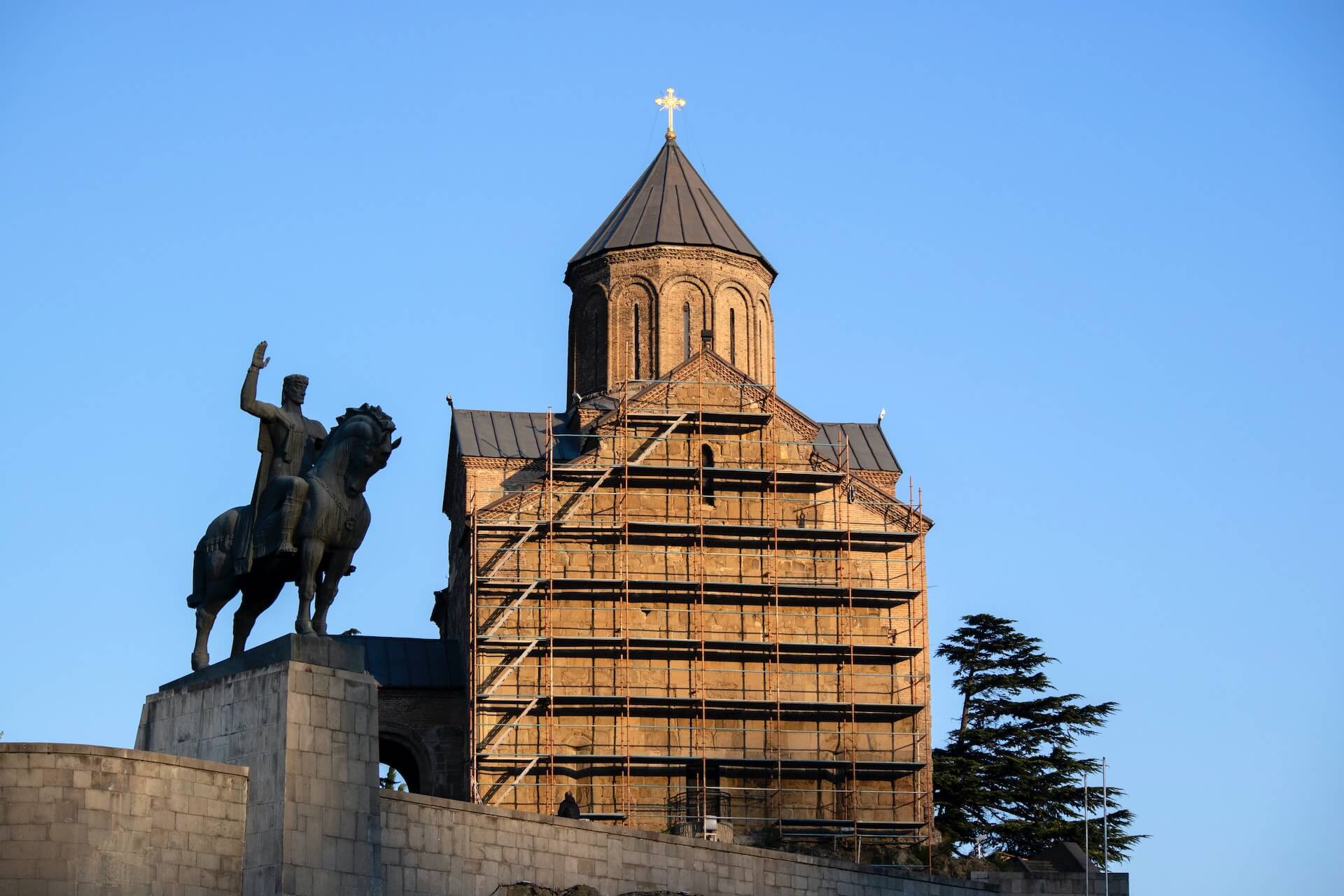
One of the most famous landmarks not only in Tbilisi but in all of Georgia. The church is visible from any point in the city. Metekhi is mentioned in documents as early as the 12th century. Next to the church stood a palace, and …it was an entire defensive complex with massive stone walls.
It suffered many times from barbarian raids but was restored each time. In the 19th and 20th centuries, a prison was located here. By Beria’s order, the structure was supposed to be demolished, but the historical building was actually saved by the artist Shervadze, who practically sacrificed his life for it.
The church was handed back to the faithful in 1988. Many legends are associated with Metekhi, particularly the fate of Saint Shushanik. She was the wife of the ruler of Kartli, Vasken, and when her husband renounced his faith and began aiding enemies, Shushanik prayed for the salvation of her homeland and her husband’s and children’s souls.
She spent many years in captivity, where she eventually died. In the church, you can see many ancient elements, especially the exquisite stone carvings.
Rustaveli Avenue

This is the most famous street in Tbilisi, where public life is concentrated. It is somewhat like the Nevsky Prospect for Tbilisi’s residents, so you must visit it. Long ago, behind the fortress walls surrounding the city, there was a road leading to the village of Digomi.
Houses began to be built along this road in the mid-19th century. Later, the governor’s residence was erected here, along with a large cathedral. Then, a museum, the opera house, and a hotel for distinguished guests of the city were added. Under Soviet rule, the street became the main thoroughfare of Tbilisi.
Start your walk from Freedom Square. You will see parks, shopping centers, the Griboedov Theater, the national museum, a cinema, and much more.
Parliament of Georgia
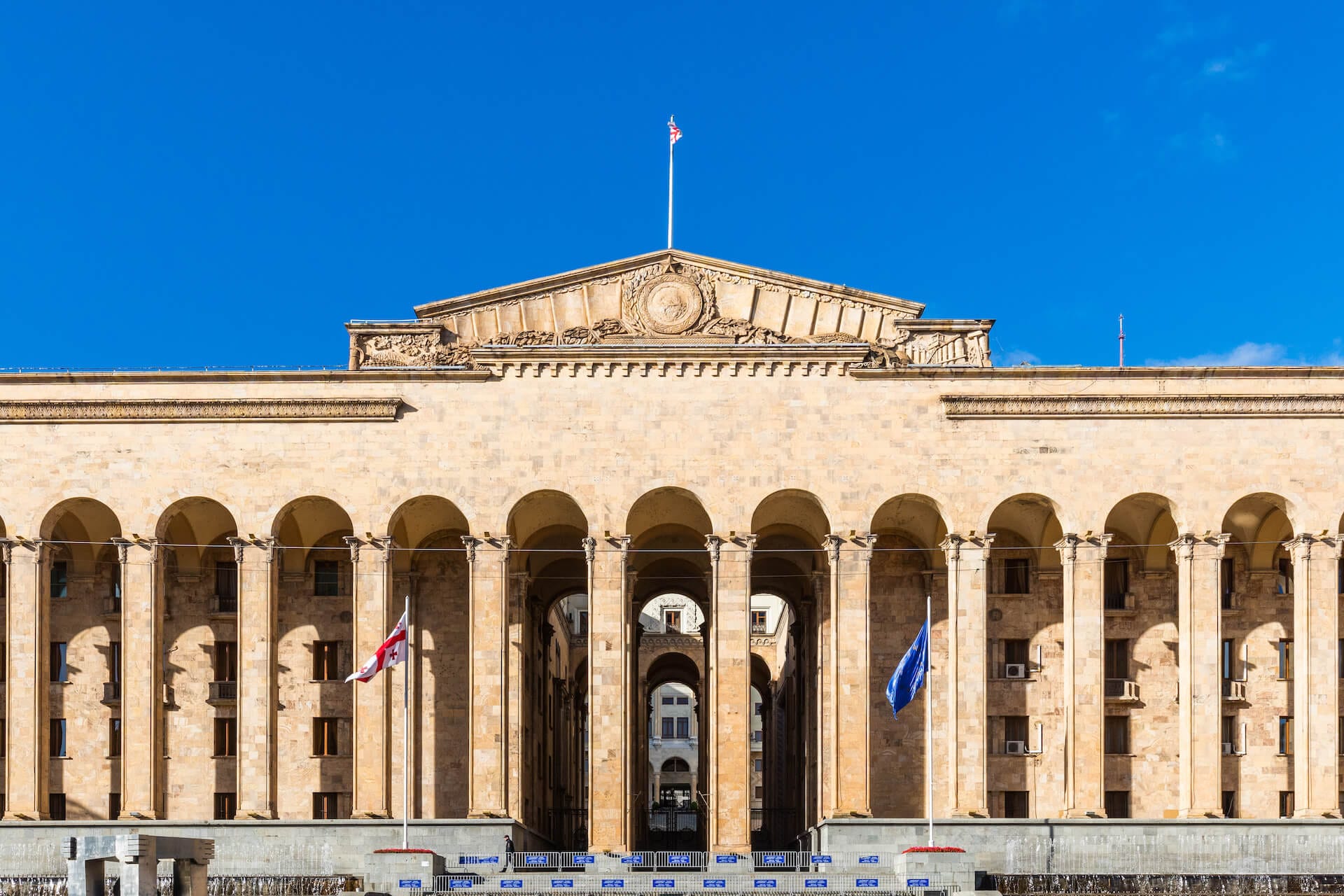
The old Parliament building is located on Rustaveli Avenue. It was built in 1953 and is a prime example of monumental architecture. The impressive arched colonnade adds to its grandeur. The cascade of fountains also adds a unique touch to the design.
Once, the famous military cathedral in honor of Alexander Nevsky stood here. It was built in 1897. Shields listing the regiments that participated in the conquest of these lands were stored here. Nearby stood a bell tower, and there were cannons captured from enemies. All of this was enclosed by an iron fence, and entry was through special gates. Beria ordered the cathedral’s destruction in the 1930s.
Radisson Blu Iveria Hotel Observation Deck
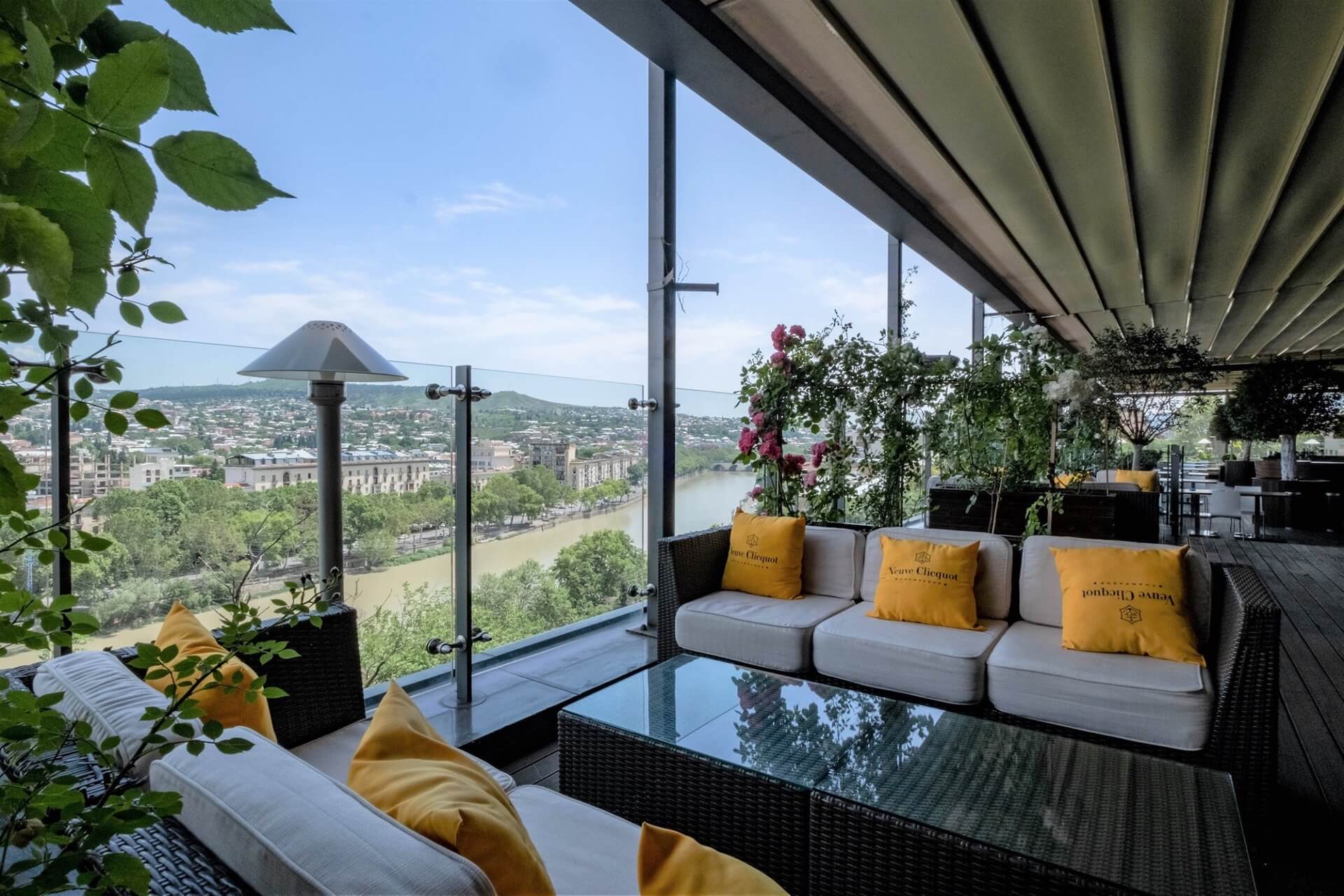
This spot is very popular. The hotel is located near the Rustaveli metro station. If you are not staying here, you can still enter and go up to the 18th floor to enjoy the city’s view. It is particularly spectacular in the evening.
Entry is free, but to show appreciation to the staff, you can order a glass of wine. The bar offers a wide selection. On your next visit to Tbilisi, try to stay at this hotel—it’s one of the best.
Mtatsminda Mountain
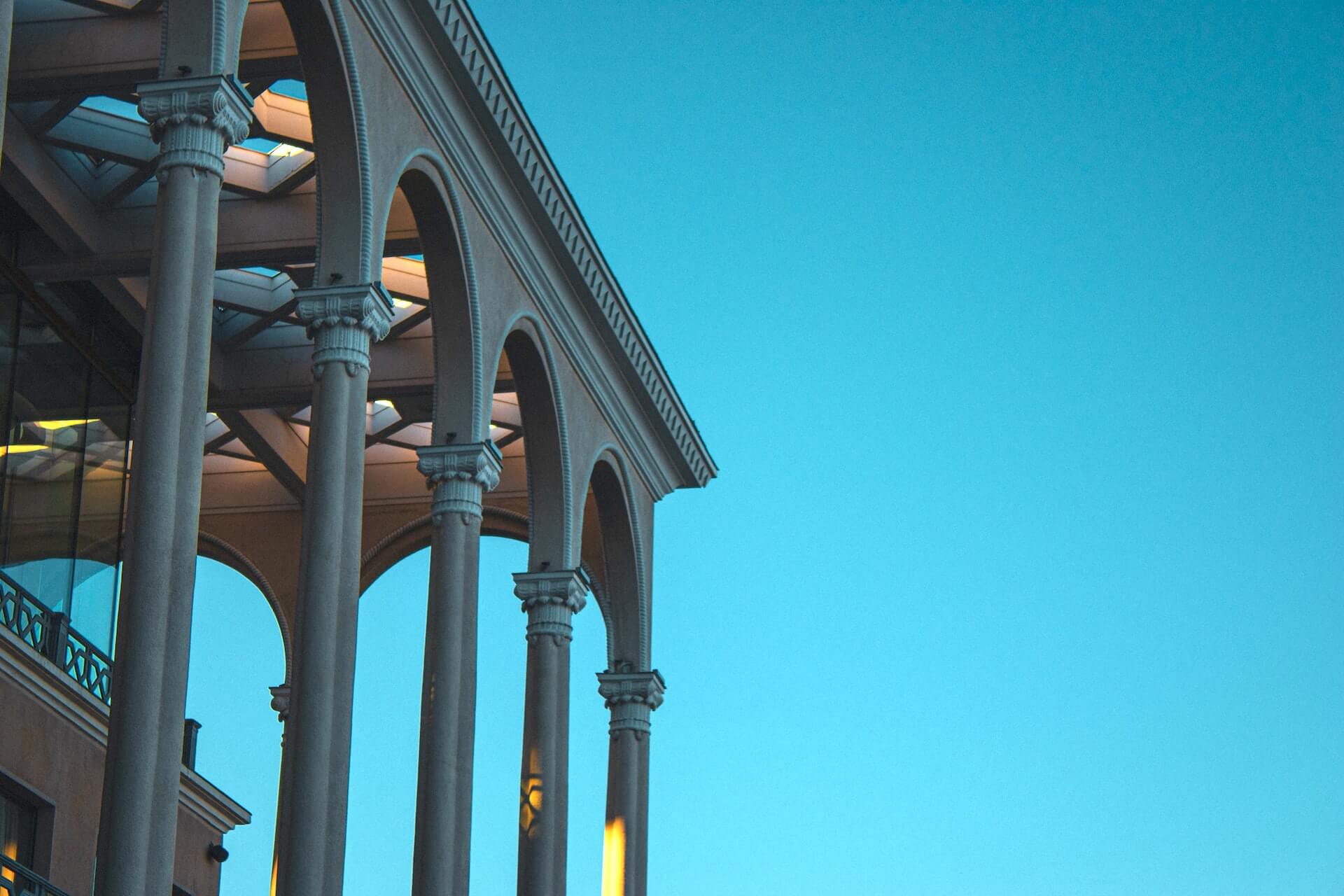
This is the name of the mountain that rises on the right bank of the Kura River. Its height exceeds 700 meters, and its name translates to “Holy Mountain.” There is a lot of greenery here, providing ample space for walking and relaxing. You can stand on observation platforms, visit the church of Saint David, and enter the pantheon where famous sons and daughters of Georgia, the country’s heroes, are buried.
The church was built in the 6th century, and Saint David once lived here in a cave. His prayers caused a spring to flow, whose waters heal women with infertility. At one time, ufologists observed abnormal phenomena around the mountain.
Mtatsminda Park
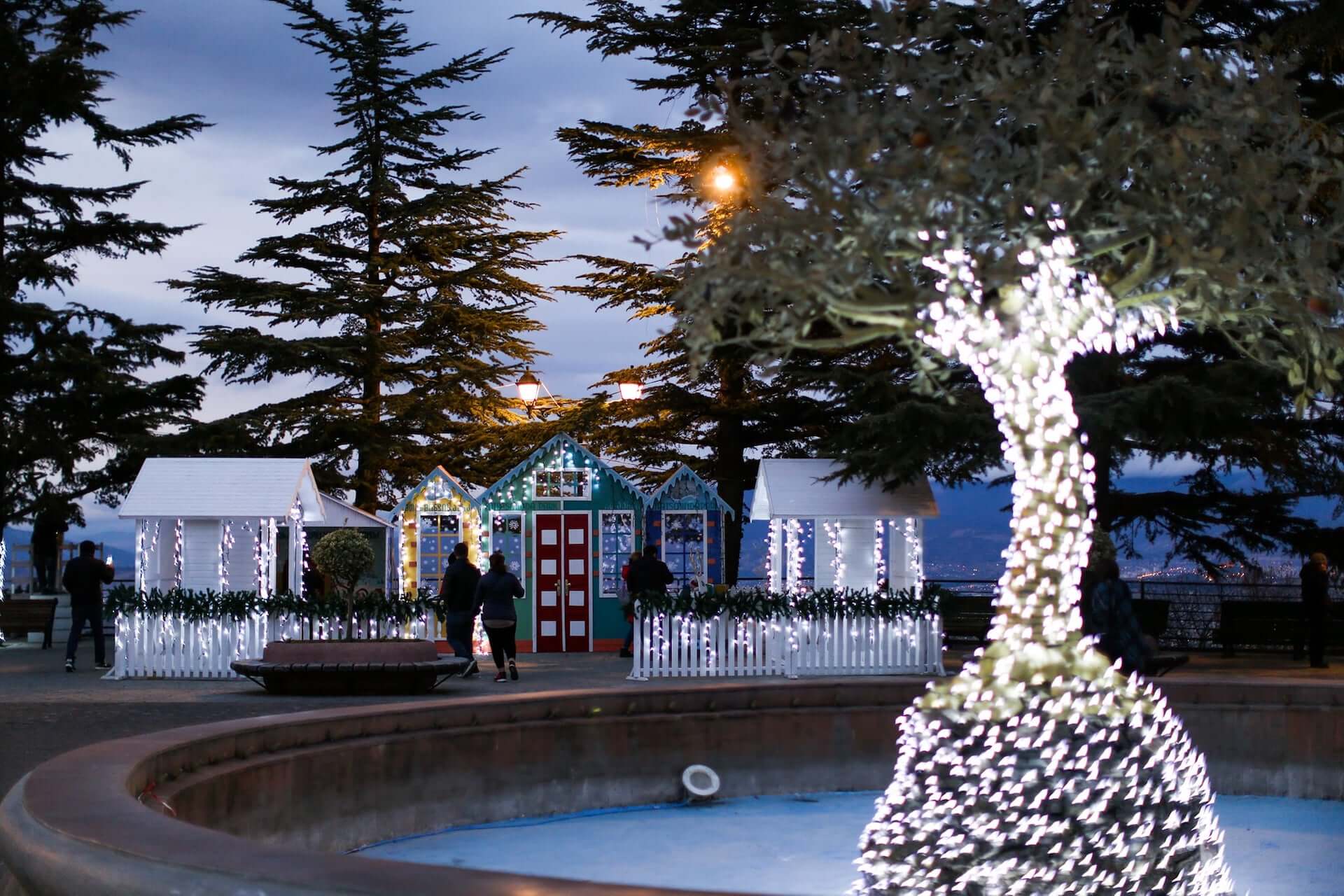
Located at the top of the mountain, people used to come here for picnics, but in the 19th century, restaurants began to appear on the slopes. One of them is described in the book “The Twelve Chairs.” In the 1930s, the Stalin Park was opened here, and it was renovated in the early 2000s. Today, the park covers 3 hectares.
There are attractions, a family zone, and an area offering extreme entertainment. An aqua park, wax museum, shooting ranges, and much more are also here. Be sure to ride the Ferris wheel, take photos with unusual and funny sculptures, and buy souvenirs.
Chronicle of Georgia Monument
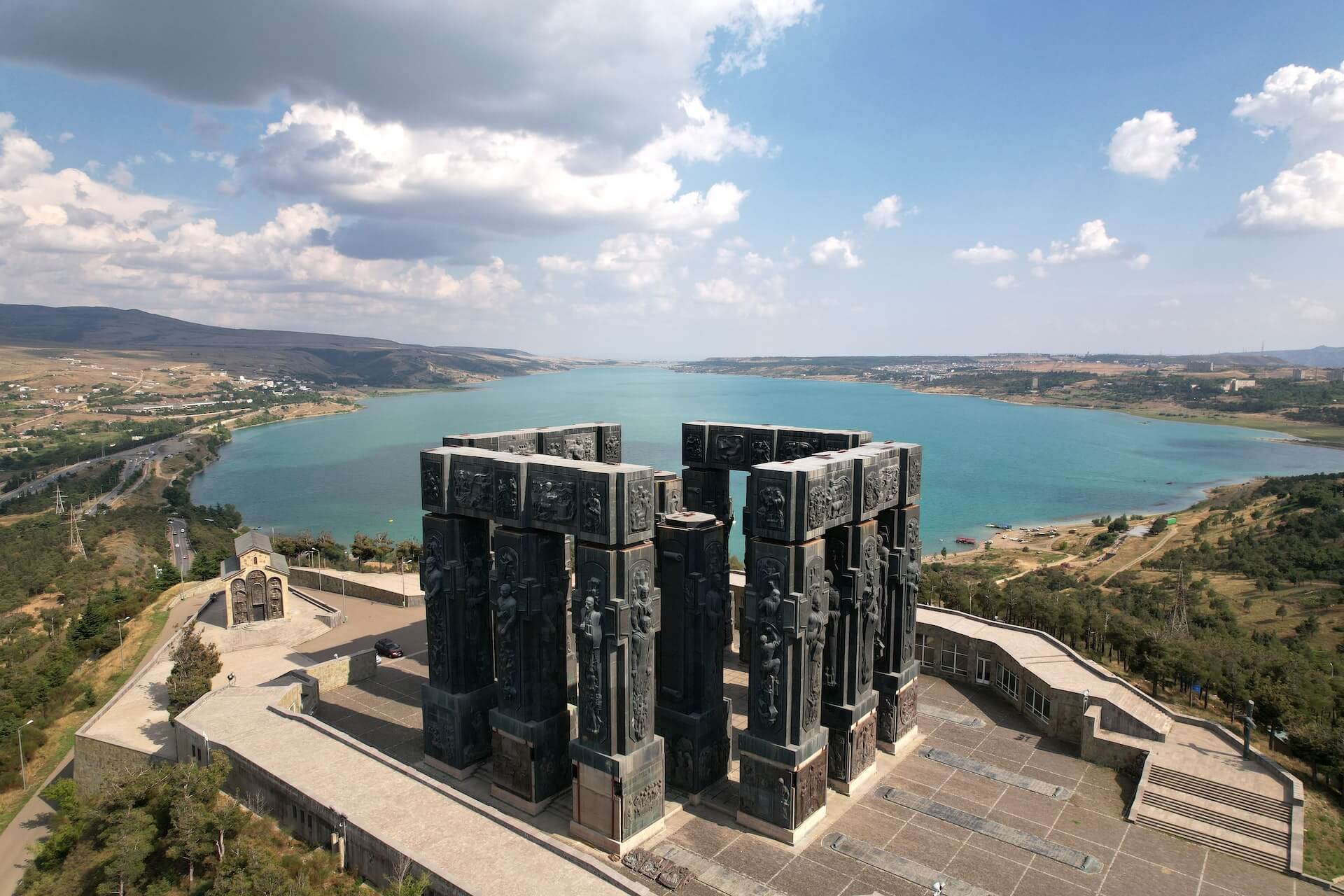
A grand work by Zurab Tsereteli, created over two decades. It consists of 16 columns, each reaching up to 35 meters. The lower part depicts biblical scenes, the middle part features famous people of the country, and the upper part shows everyday life scenes like harvest gathering. Seen from above, the monument has the shape of a cross. A small church is located nearby.
The monument makes a strong impression and is a must-see.
Of course, you won’t be able to visit all the attractions mentioned here; you will need to choose which ones to prioritize. But try to see as much as possible. Tbilisi is rich in cultural treasures, and this city awaits you.
Discover the Best Day Trips from Tbilisi: 18 Must-See Places

